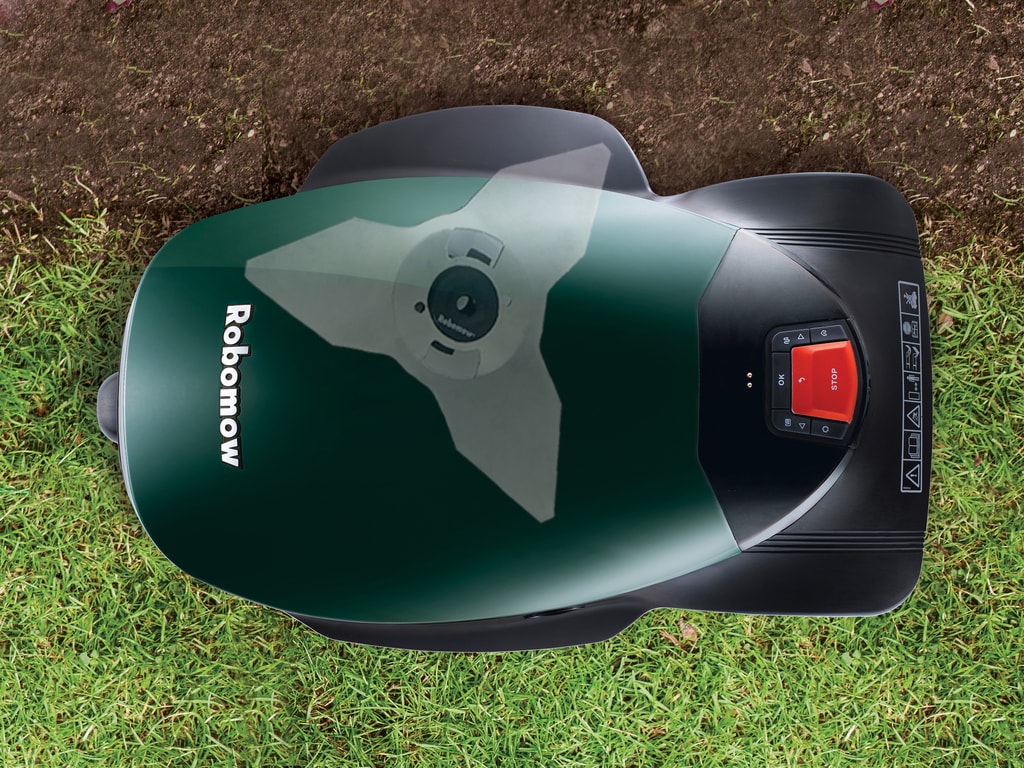Which robotic mower is suitable for small gardens?
25.04.2021
Small areas are mowed quickly and obviously do not need a large robotic mower. If you decide to choose a compact model, not only is it cheaper, but you can also save a lot of energy during operation. However, what else is important in a robotic lawnmower for small gardens so that the device does not turn out to be a bad purchase?
Calculating the right area output
Probably the most important key figure of a robotic mower is the area output. You can use this to determine which product is suitable for your lawn. The manufacturer's specification always refers to mowing under optimal conditions without taking into account restricted mowing times, which may result from daytime use, obstacles or winding gardens, for example. The more effort the robot needs, the quicker the battery will drain, the number of charging intervals will increase and the area output will decrease. The area output can be calculated with the following formula:
Area output according to manufacturer's specification in m² * planned weekly operating time in hours /
manufacturer's specification of operating time including charging times
= actual area output.
Choose a model that generously meets your requirements but is also not oversized. Moreover, a higher area output means more power and, as a rule, a greater cutting width - which comes at the expense of maneuverability and unnecessarily drives up electricity costs.
The cutting pattern is what counts
Even in small gardens, only an accurately cut lawn looks well-groomed. Many robotic lawnmowers for small areas are inexpensive to buy, but they also cut corners on the quality of the blades. The result: the blades pluck the grass rather than cutting it cleanly, and the cutting pattern becomes uneven. Hence, when purchasing, look for high-quality, long-lasting blades that can be replaced by yourself in a few simple steps if necessary.
The volume of the robotic mower
During operation, robotic mowers usually run between 60 and 70 dB. This means they operate comparatively quietly and cannot be heard at a distance of ten meters.
If the relationship with your neighbors is tense to begin with, it is recommended to buy a particularly quiet device with a noise level of about 60 dB.
The maneuverability of the robotic lawnmower in small gardens
In contrast to large gardens, lawns in small gardens are usually rather winding and with narrow passages. For a robotic lawnmower, such aspects pose a particular challenge. Models that are especially maneuverable with a narrow cutting width of around 20 cm have a clear advantage here. Although this reduces the area output, it ensures that the robots can navigate better and there is less touch up in corners and edges.
A narrow cutting width ensures high maneuverability, which proves to be an advantage in small gardens with many angles and corners. Although the efficiency in large areas is not as high as with larger lawn robots, compact devices achieve better results in confined spaces.
Mowing with edge function
Due to their design, the blades of a robotic mower are located on the underside. Often, they are even located between the two drive wheels. So, while cutting along beds or walls, the robot might not be able to reach the outer blades of grass. Timely touch up is the result. Especially in models for larger areas, many robots are equipped with a unique edge-cutting function where the blades extend beyond the wheelbase – making touch up hardly necessary. What’s more, you don't have to give up this convenient feature even with compact robotic mowers for small gardens.
When choosing your robotic lawnmower, look for a practical edge-cutting function. Blades protruding above the wheelbase reliably cut grass even along lawn edges so that touch up is reduced to a minimum.
Efficient lawn mowing with powerful batteries
The power of electrical appliances is usually specified in ampere-hours. This figure indicates how much power the battery can store and then release. Smaller robotic lawnmowers, for example, have batteries with 4.3 Ah or 4.9 Ah. In purely mathematical terms, this means that such a battery can be loaded with 4.3 or 4.9 amps for one hour. This is sufficient for small lawns in any case.
Together with the voltage number, this results in the consumption of the device, which you can then use to determine the robot’s endurance called watt hours. If you multiply the two quantities, you can quickly compare different robots with each other.
A piece of cake to operation via app
Unlike large robots, lawn robots for small gardens usually do not come with a control panel via touch screen. However, you won’t have to give up a high level of operating convenience even with compact lawn robots.
Models that can be programed and controlled via app impress with a high level of operating convenience.
There is no need for a large robotic lawnmower for a small garden. Special models with narrow cutting widths, low operating noise levels and simple operation are ideal for lawns of 300 m² or less - and are comparatively inexpensive to purchase. This leaves you more time to enjoy your garden to the fullest.
Products
Buy a Robomow
Robomow owner
About us
Sales & Support


